The bristling chest, the suggestive swell under the feathered crotch, the leering lipsticked mouth, the size 12 pink pointe shoes. Even the name of the troupe tickles the ribs, so serious yet so ridiculous. What's a camp word like Trockadero doing in the middle of a legendary Russian ballet company name?
It's time to raise a scented handkerchief in respect to the male comics known as the Trocks, visiting Britain on their 40th anniversary tour. The beefy ballerinas with their fragile Russian nerves have been dying on stage before us for decades and show no sign of stopping, so much do audiences all around the world love them and beseech them for encores. Their parodies of Swan Lake and The Dying Swan are a deathless tonic for any depression, their sound technical training ensures that they can take on classical rarities with a disconcerting ballerina finesse, under the comedy costuming.
Like all top comedians, they are hard-working perfectionists, and to watch the artists rehearse is not remotely funny - a serious bunch of men in vests and sweats, who just happen to have man-sized satin pointe shoes on. Under the soft-spoken lash of their director Tory Dobrin, who has an intolerance for stale buns, they constantly recut and repolish their pratfalls, adding bravura twists of technique to keep every joke as fresh as their lipstick.
Time never stands still for a ballerina who's perhaps 40 years older than she admits to, and the programme brings us snippets of entertaining biographies to go with the punning names (one is known as "the Odessa Chihuahua", another jealously impaled a Grand Duchess with her pointe shoe). One may miss a much-loved Trock from a previous tour, but there are new poison princesses snapping their steel-capped pointe shoes into fifth and plotting against the diva. Every show begins with an unfailingly enjoyed preamble outlining the vulnerable state of the performers' nerves and the inevitable programme changes.
If the military had known the Trocks was a bunch of drag ballerinas, they never would have allowed it
In that sense time does seem to stand still at a Trocks show. But nothing could be less true, for the origins of the Trockaderos, and the dramas of their survival for four decades, are more dramatic and giddy than any invented for their personas. Last weekend I met Tory Dobrin to find out more about the origins of this troupe of comic aristocrats (whose Facebook page is becoming a bubbling river of happy campers leaving notes of pleasure about their experiences so far in Nottingham, Canterbury and Birmingham). Tory, now 58, was a Trock himself over 30 years ago - so we started there.
ISMENE BROWN: Do you remember how you felt when you first put on a ballerina costume and went out on stage on pointe?
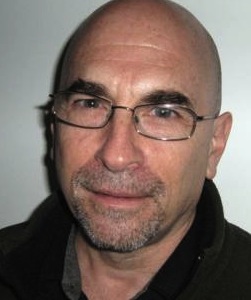 TORY DOBRIN: Of course I remember it 100 per cent. We were at São Paolo opera house, and I was doing Swan Lake in the corps, and I have never felt so disorientated in my life. Like a mummy. The pointes are hard blocks on your foot, you’ve got pink tights on, you’re all strapped in, you have a wig and false eyelashes. It was not just a Halloween costume feeling - it was definitely an unusual situation because you had to go out there dancing ballet steps in pointe shoes you had no idea what it was all about. Not like today. I absolutely remember - it was horrifying!
TORY DOBRIN: Of course I remember it 100 per cent. We were at São Paolo opera house, and I was doing Swan Lake in the corps, and I have never felt so disorientated in my life. Like a mummy. The pointes are hard blocks on your foot, you’ve got pink tights on, you’re all strapped in, you have a wig and false eyelashes. It was not just a Halloween costume feeling - it was definitely an unusual situation because you had to go out there dancing ballet steps in pointe shoes you had no idea what it was all about. Not like today. I absolutely remember - it was horrifying!
But the whole tour was fantastic for us because it was basically the height of the military dictatorship in Brazil, so all the places we went to were in high social distress. I am fairly sure the military didn’t know what the Trocks were - if they had known it was a bunch of drag ballerinas, they never would have allowed it. But the audience knew exactly what we were, and they were using the company as a way to protest against their rigid society then. The response was mind-boggling. Screaming, cheering, throwing flowers.
Was it equally boys and girls? Was it very gay?
You can’t see from the stage. And we didn’t read Portuguese so we didn't understand the reviews and press.
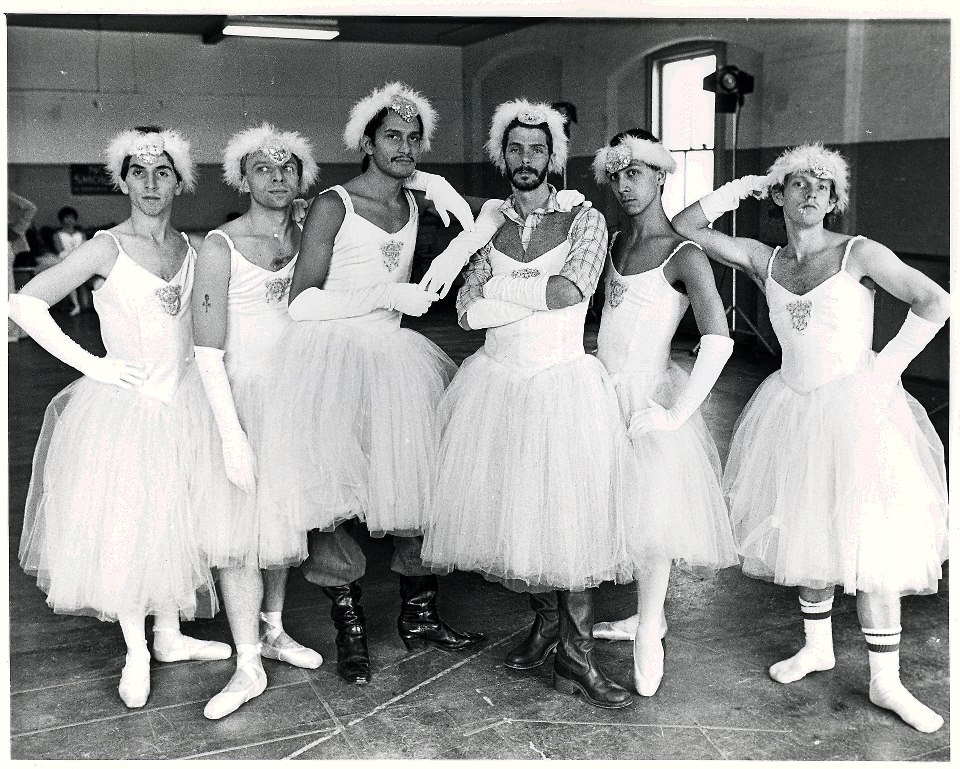 What was the concept of the Trockaderos in the Seventies?
What was the concept of the Trockaderos in the Seventies?
I don’t think the first guys were mostly dancers, they were more like fringe theatre people with some dance training (picture right). The organisation was trying to climb out of the non-professional milieu it was in. It was a little bit chaotic. From '74 to '80 there were three people running it. Peter Anastos, who insisted that the choreography had to contain all the jokes, and he choreographed it with jokes. There was Antony Bassae who was “the black rhinestone of the Russian ballet”, who was a big burly black guy who said, no joking, do it totally seriously and the jokes will come from the seriousness. Then the third, Natch Taylor, had a lot of money and was bankrolling the whole thing.
Between those three elements there never stopped being the issue with Les Ballets Trockadero: was it serious - too serious - serious - too serious. Everyone always has an opinion. It’s the same issue today. Talk to people after the show and some of them will say, it was so funny but why wasn’t the last piece so funny? And you talk to the ballet people and they say, take away the jokes, you don’t need them... It’s the same issue. That’s what is so interesting for me. By the time I joined, Peter left, Antony Bassae left, and it was just the ballet mistress, who was really trying to upgrade the company. We had this incredible dancer, Sanson Candelaria, I hate to say it but he was a genius. He was a total kook, the funniest character you could ever have seen on stage. He was the guy who kept the company going through the early Eighties.
When I joined it was 1980, I was 26, I was just a floater, I went with whatever flow there was. I wasn’t particularly ambitious. I’d simply run into a friend of mine taking a class, and he said, oh, the Trockaderos were recruiting. Going away for nine weeks sounded fun. I said, sure, I had no positive or negative feeling about it. But I personally was very happy when my partner, Mike Gonzales, was also in the company; he joined as wardrobe person and designed all the costumes but then he danced with the company too. I joined in '80, and he joined in '83. From '83 to '90 it was a great time in my life. I was a principal male and a soloist ballerina...
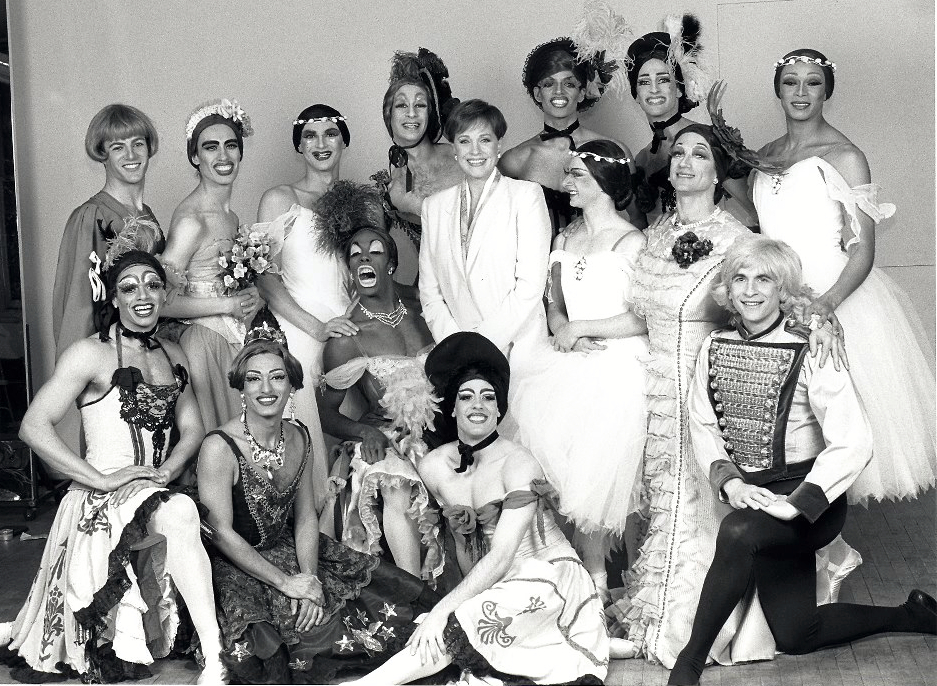 Only soloist? How degrading...
Only soloist? How degrading...
Totally. But I did do the lead in Les Sylphides once! See, I’m a big guy, heavy, stocky type (Tory pictured front right in the line-up with guest Julie Andrews) so I wouldn’t be suitable for those type of roles. But don’t forget the rep was much easier then. We didn’t have all this super-scary technical Russian work we do now. We had Swan Lake, and Sylphides, both much easier, we had a one-act Don Quixote which was much easier, we had Raymonda’s Wedding, which was much much easier. We had some modern works, like Go for Barocco, we had some which lasted only one season because they were so terrible.
The early '80s were great, and then a couple of things happened. The National Endowment for the Arts started being cut back, senator Jesse Helms was looking for things, and anything that wasn’t mainstream conservative got targeted, like us and Pilobolus.
But worse was the Aids crisis. Nobody knew how to handle it worldwide, and we didn’t know in the company, so we came under a lot of pressure and trauma. There’s one photo we have from 1983 in which three are on one side of a Japanese ballerina and eight on the other side, and all those eight people are lost. There’s only three of us in that photo who are still alive today. That’s quite shocking to me.
If you’re not a gay man who lived through the '80s, you can’t really identify with this era or the psychological scar of it.
It was awful. When Sanson died [in 1986], and others died, the management lost the will, and we lost direction, which became critical. I had gotten injured in about 1986, pretty badly injured. By the time 1990 rolled around the company was on its way to total extinction, we had no bookings, the show was bad, and the ballet mistress had left. So I suggested to the general director that we have a small chamber company, six dancers and tour around and pull ourselves together. We talked about the fact that in the '80s we’d been trying to go the straight and narrow path to show our legitimacy in the dance world, and had been attacked for being off-colour. But we weren’t even doing the off-colour things, so why didn’t we start to relax and do off-colour stuff and have fun? We hadn’t had fun before.
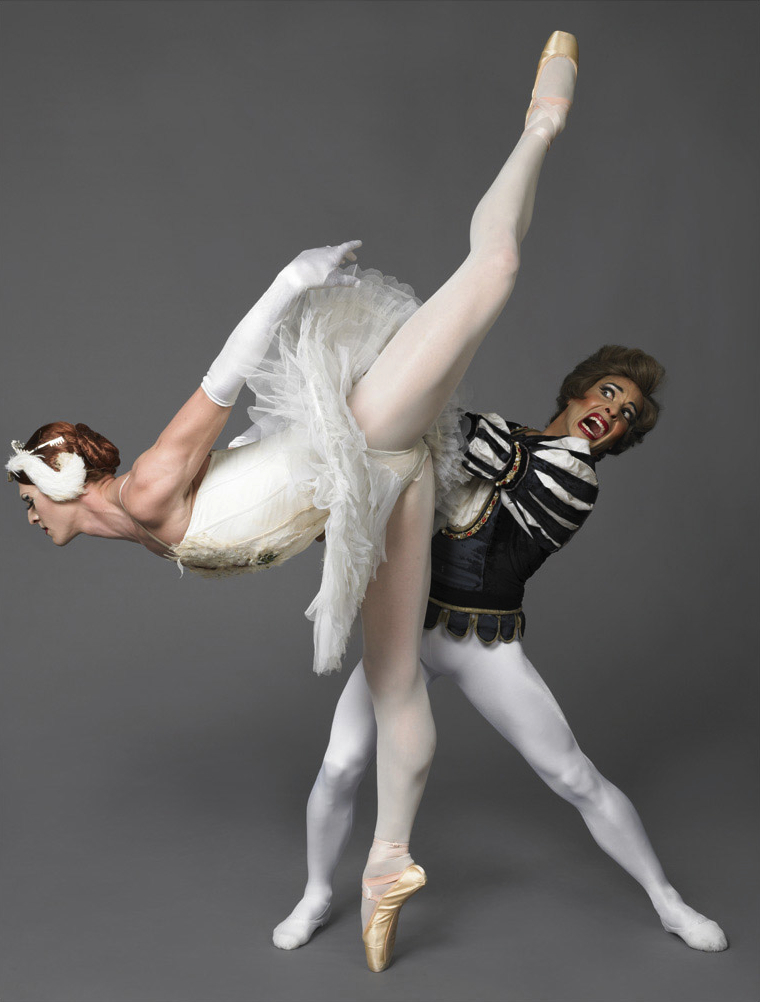 So now we started to have a lot of fun (Pictured right, Katerina Bychkova and Andrei Leftov in Swan Lake). It took a few years to figure this out, and by 1994 or '5 we had built up a lot, we had brought in new choreographers such as Elena Kunikova, and I was also keeping track of behaviour on and off stage, so it was about building self-esteem, and not this crazy behaviour which was what had gone on in the '80s. I started looking at the show as a whole evening, rather than component parts, so you want to be sure you don’t have the same jokes at the beginning as at the end of the evening - how tedious to have non-stop mugging. So you need to shape some sort of taste over the whole evening. And inside the organisation.
So now we started to have a lot of fun (Pictured right, Katerina Bychkova and Andrei Leftov in Swan Lake). It took a few years to figure this out, and by 1994 or '5 we had built up a lot, we had brought in new choreographers such as Elena Kunikova, and I was also keeping track of behaviour on and off stage, so it was about building self-esteem, and not this crazy behaviour which was what had gone on in the '80s. I started looking at the show as a whole evening, rather than component parts, so you want to be sure you don’t have the same jokes at the beginning as at the end of the evening - how tedious to have non-stop mugging. So you need to shape some sort of taste over the whole evening. And inside the organisation.
And you had to give people variety. In the '80s it was the same ballerina doing every role, Sanson, and he was beautiful, but when he died nobody else was able to do the roles. Nobody had been given the opportunity.
I remember in 1970 when I was 16 there was a philosopher called Buckminster Fuller whose line was that in the history of the world, there had never been enough for everyone, never enough food. But, he said, in the Sixties there is enough, all we need to do is organise it better to ensure everybody gets some. The only reason people hate each other is because they think there isn’t enough. I started applying that to the Trockaderos, because in the '80s when you had no options to do anything apart from what you were told to, didn’t that cause the seething mentality? You could only think how unhappy you were. So when I became director I told them my motto: "If you can you will. Though obviously if you can’t you won't." So we had a load of casts possible. Even today I never stop people from rehearsing roles in the back where the lead ballerina can’t see them.
So the secret of all this preposterous bitchery onstage is harmonious teamwork behind.
You have to have the harmonious teamwork, and you have to have the possibility of doing the role, so that you know you will be supported and cheered on, just as you are supporting and cheering on whoever is doing it right now.
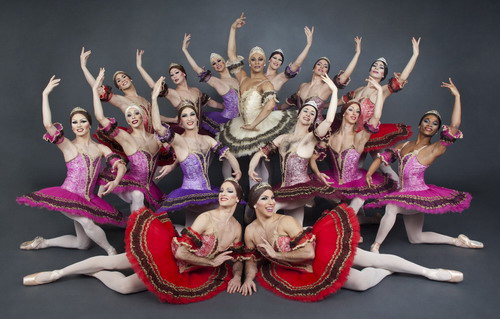 And that makes them able to be funnier comics?
And that makes them able to be funnier comics?
It takes away a kind of tenseness and seething. It makes Bobby Carter, for example - one of the leading ballerinas - confident that he will never be cast aside. It doesn’t mean that there aren’t new people coming up, but it means Bobby (pictured left, the diva in the middle) is secure in his position in the company. And he’s very supportive to others with roles, and others see that he’s helpful, they take that on and it fosters a nice atmosphere.
What does it say about America or showbiz that over their 40 years the Trocks have come from being this kind of off-the-wall nightclub show into a professional, highly organised, hugely successful company that men come in droves to audition for? Is it the money?
No, it’s not the money! We are not a rich company at all. We maintain ourselves, we’re the only company in the United States that does it entirely commercially - we do it on a fixed fee, not the box office. We’re very frugal, I keep no information away from the artists, we’re pretty open about the finances.
For me the turning point in our attitude came in the mid-1990s. Mike Gonzales and I were partners until 1990 and broke up, but then he came back to the company, and we became really close friends. And then he died in 1996. For me that was a total turning point, because as my mother said, we’re all going to die anyway, what’s the difference? If you’ve been through the Nazi era and the Aids crisis, you don’t live for the soap operas - life is more serious than that. 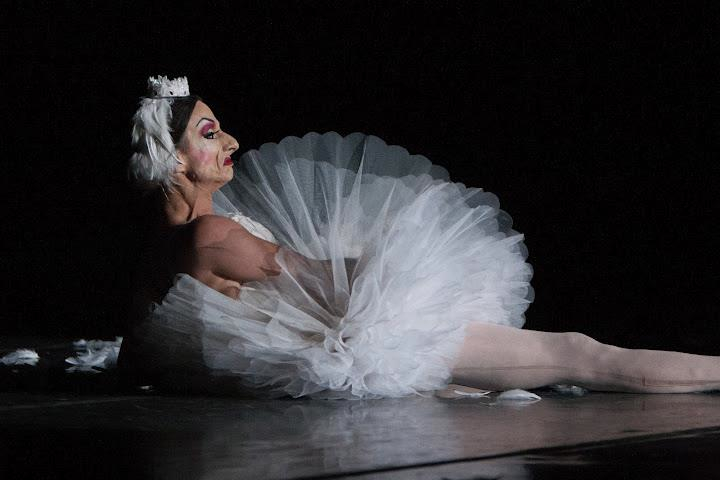 Anyway in the '80s we were just doing things choreographed by the ballet mistress that weren’t particularly interesting, just laughing at male ballerinas maybe. But in New York when cable TV started coming in, there used to be this cable TV show twice a week that would show snippets of old Russian ballerinas. Maya Plisetskaya, Ulanova, Marina Semionova’s Swan Lake and La Bayadère, with Chaboukiani. And Laurencia. Mike and I would watch these ballets, and at first we made fun of them, but then then we started realising: this is incredible - this is what Ballet Trockadero should go for. America was going in the other direction, the Balanchine aesthetic that doesn’t have a lot of ornamentation or personality. So we would do the opposite (pictured above, Ida Nevasayneva in The Dying Swan).
Anyway in the '80s we were just doing things choreographed by the ballet mistress that weren’t particularly interesting, just laughing at male ballerinas maybe. But in New York when cable TV started coming in, there used to be this cable TV show twice a week that would show snippets of old Russian ballerinas. Maya Plisetskaya, Ulanova, Marina Semionova’s Swan Lake and La Bayadère, with Chaboukiani. And Laurencia. Mike and I would watch these ballets, and at first we made fun of them, but then then we started realising: this is incredible - this is what Ballet Trockadero should go for. America was going in the other direction, the Balanchine aesthetic that doesn’t have a lot of ornamentation or personality. So we would do the opposite (pictured above, Ida Nevasayneva in The Dying Swan).
So that’s what you do - 200 percent emotion!
Thanks to those videos.
The idea of seriously studying the period manners and technique, where did that come from? Because people do learn from watching you.
Well, the point is to be entertained. Whether they learn or not is not really the issue. I am learning from it but the audience is coming to be entertained. As long as I never forget that point of view we’re fine. We want to learn and make it interesting to ourselves, but 90 percent of the audience don’t care a darn.
Do the dancers themselves appreciate the high sophistication of this stylistic detail that they’re addressing?
I don’t know, but they have to do it, and if they don’t want to do it they don’t stay! But because we have that reputation now, we tend only to get dancers who want to do it. This is one thing the Aids crisis taught me - just to do it: this is what I want, and if you don’t want to do it go elsewhere. I was once in Japan and I ran into someone in the ABT management and the whole line of his conversation seemed like that he was afraid of his dancers and didn’t want to insist on how they did things. I said, I’m not afraid of my dancers, the worst thing that could have happened in life already happened! There is no argument in the Trockaderos about how we do things. I say what they are to do, with Elena Kunikova or Paul Ghiselin. They don’t resist, but the ones who eat it up are the ones who will be at the front of the stage.
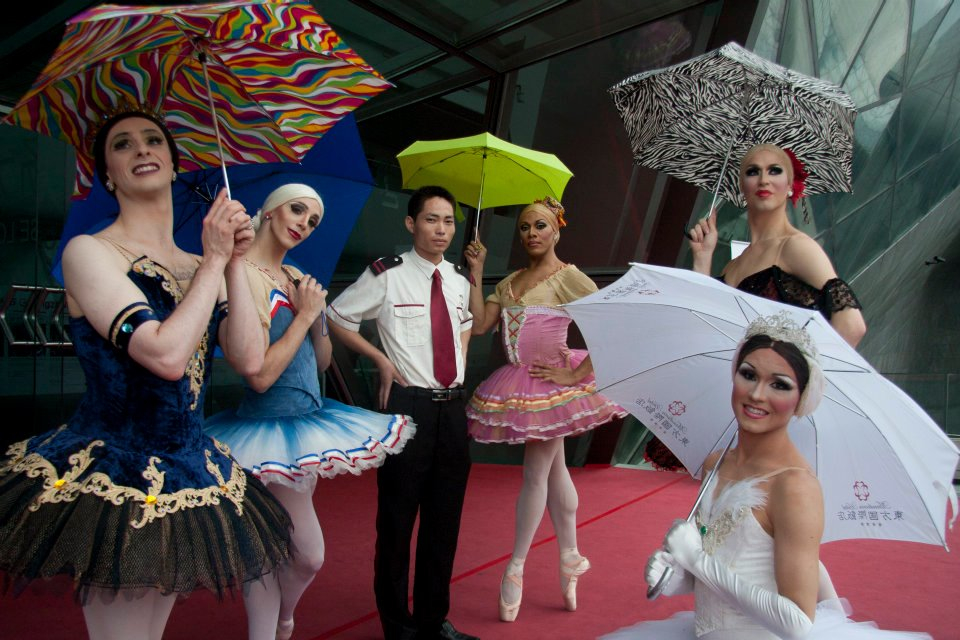 Your worldwide tours... Are there any countries where you are received with scepticism?
Your worldwide tours... Are there any countries where you are received with scepticism?
No (pictured left, the Trocks in China - with bemused security guard).
What about Russia?
They receive us there better than most, truly better than most. The first time I went there it was such a difficult time, early '90s, and it was a pretty scary place. We did St Petersburg and this journalist came to talk to me and she said to me, how do you feel about having so many homosexuals in the auditorium? I mean, I nearly fell out of my chair! I think I said, being a homosexual I think I quite like it! It was so out there and I knew I was saying quite the wrong thing, but I didn’t give a damn. We did Moscow two years in a row as well.
In a way the success of the Trocks over 40 years is an aesthetic and showbiz story, but also the story of the gradual normalisation of many countries' views of homosexuals.
If you think about it, the seeding of the Trocks came from the Stonewall riots of 1969 because the gay culture exploded after that. You have to say that “drag fever” really started the Stonewall riots, and the Trockaderos really came out of that movement. So although the Trockaderos are not a “gay show”, as it doesn’t address gay issues, all the performers are gay guys, and so there is a lot of gay sensibility in the show. But it’s not the main factor. In that period when I’m looking at videos of Russian ballet, I’m also seeing Paul Taylor and Merce Cunningham and Twyla Tharp, and you’re really getting away from ballet as it used to be.
I remember getting quite angry about it. You spend good money and no tutus!
There was a pivotal moment when I went to see San Francisco Ballet at City Centre, and there was not one tutu on stage. And I remember getting quite angry about it. You spend good money and no tutus! And I decided, that’s what the Trockaderos are going to do, in the complete opposite direction. And so I started looking up this old Russian classic stuff, finding a teacher of the style, and encouraging the dancers to do more, to be less stiff. On the tour bus I would put on those old Russian videos, and people who were really interested and wanted to would watch it, people like Bobby, Paul, who flourished and got behind it, and tended to carry the show. You may have lot of good dancers, but it’s only five or six dancers who actually carry the show; the others I use so the audience can see they’re wonderful dancers.
The period detail that you play with opens a window onto a vanishing old world of ballet that is very precious. Do you think about the value of that?
No, I think of it that I want to look at it. People are paying good money to come and see us, and I feel a sense of responsibility to show the best that we can do, and the best that I can think of to do, not to let them down. It’s my responsibility to Heather Knight, the Dance Consortium, to Elena Kunikova, to our audience, to our agents who bus us around the countries.
To your art?
No, I’m not sure I feel that way! It might not sound good, but what I’m trying to do is construct a well-balanced programme so the audience will think, I saw a whole load of different stuff and I enjoyed it all. It's the audience, first.
The Trocks' trailer for the 2013 UK tour














Add comment